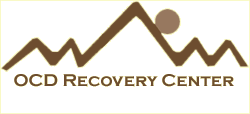
OCD - An Overview
General
- Obsession, or compulsions that are a significant source of distress, or interfere with social, or role functioning.
- First described in psychiatric literature by Esquirol in 1838. Regarded initially as manifestations of depression
- Tend to fall into one of several major categories: checking rituals, cleaning rituals, obsessional slowness, obsessive thoughts, and mixed rituals.
- Generally 24-33% of OCD persons have fluctuating course; 11-14% have a phasic course and 40% achieve complete emission.
Clinical Features, Symptoms and Epidemiology
- Common OCD symptoms: withdrawal, repetitive behaviors, difficulty making decisions, simple tasks taking longer than usual, fatigability, lateness, overly concerned with details, sleep difficulties.
- Common OCD signs: recurrent and persistent obsessions; time consuming, repetitive behaviors in response to obsessive material.
- Generally 3 types of OCD: unremitting and chronic, phasic with periods of complete remission, episodic with incomplete remission permitting normal social functioning.
- Prevalence in general population of 3.0% with 1:1 sex ratio and 20 as the mean age of onset of symptoms (17.5 years for males and 20.8 for females. Slight tendency for OCD individuals to be first-born. Discrepancy between verbal and performance intelligence with preference for the former. Childhood onset correlated with higher familial incidence, but otherwise does not differ from adult onset.
Diagnosis
- Various surveys and checklists available including: Yale-Brown Obsessive Compulsive Scale, Leyton Obsessional Inventory, Maudsley Obsessive-Compulsive Inventory, Obsessive-Compulsive Disorder Subscale of the Comprehensive Psychopathological Rating Scale, NIMH Global Obsessive-Compulsive Rating Scale. Rorschach and MMPI Profiles researched (the latter with 2, 7, 8 configurations). 83% of OCD patients found to have dianosable Axis II personality disorder.
Etiology
- Genetic: Most studies find parents of OCD patients possess obsessional traits. Reoccurrence risk for first degree relatives between 20% and 25%.
- Neurostructural: Various areas of brain researched including frontal lobes, cingulate gyri, septohippocampal system, hypothalamuc, and basal ganglia. Most likely present theory based on neuroimaging studies suggests a striatal substructure dysfunction. Cerebral disorders seem in some cases to be correlated with OCD.
- Neurochemical: Most drugs which affect anxiety, depression, or psychosis are not effective. Current theories favor synaptic reuptake of serotonin.
- Learning: Individual learns that anxiety can be reduced by obsession and compulsions. Response becomes conditioned and is reinforced intermittently.
Co-Morbidity and Associated Features
- Co-morbidity common and most prevalent in: Gilles de la Tourette syndrome and motor tic disorders, depression, anxiety disorders and phobias, eating and substance abuse disorders.
Treatment
- General: 70% improve with combined behavioral and neurochemical treatment; waxing and waning course most common.
- Neurobiological: Electroconvulsive therapy not effective; some forms of psychosurgery utilized (anterior cingulotomy, subcaudate tractotomy, limbic leukotomy, anterior capsulotomy); pharmacological interventions highly effective particularly those which inhibit serotonergic re-uptake including cyclic antidepressants (clomipramine/"Anafranil"; fluxetine/"Prozac"; fluvoxamine), monoamine oxidase inhibitors (phenelzine sulfate/"Nardin"; tranylcypromine/"Parnate"), possibly in combination with various augmenting agents.
- Psychological: Behavior therapy treatment of choice focusing on exposure and response prevention, thought stoppage, systematic desensitization, imaginal flooding, participant modeling.
- Psychoeducational: patient must learn to understand disorder; supportive involvement of primary family and others; Multifamily Psychoeducational Support Group; increase self-acceptance and reduce perfectionism; develop internal yardstick for (long-term) progress; learn waxing/waning cycles; keep it simple; develop flexible family routines; follow medication regime; develop reasonable expectations; reduce environmental and intrapsychic stress.
Privacy Policy | Terms of Use | Accessibility Statement




